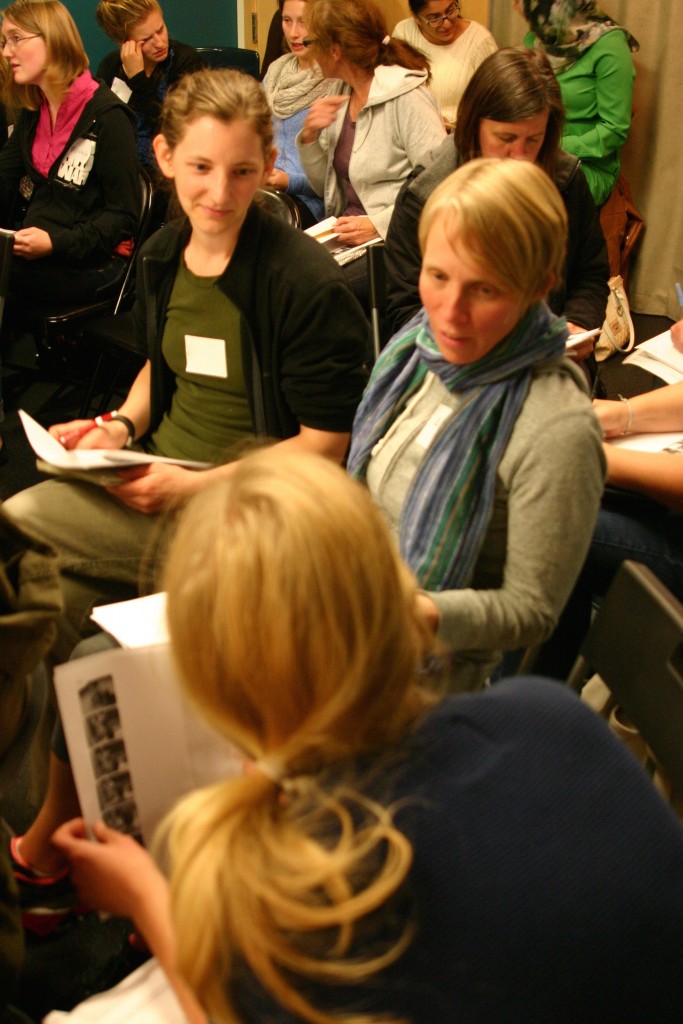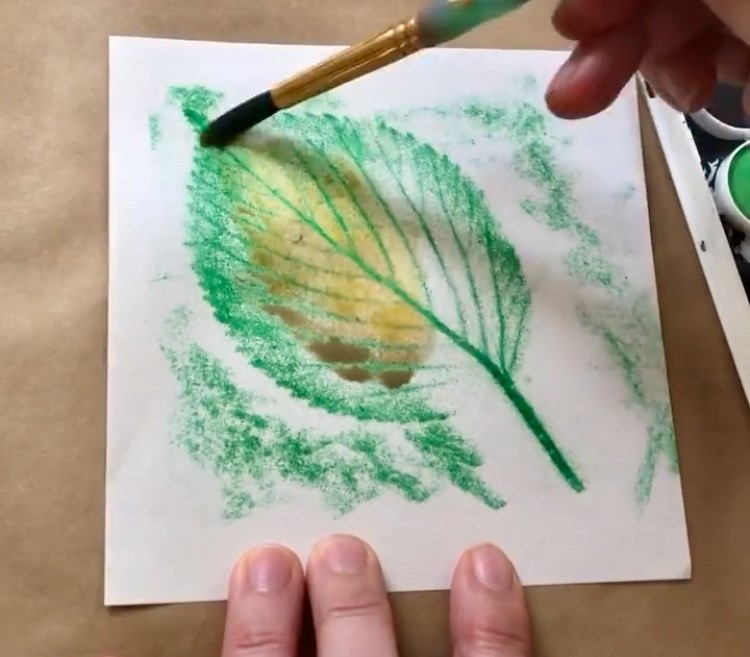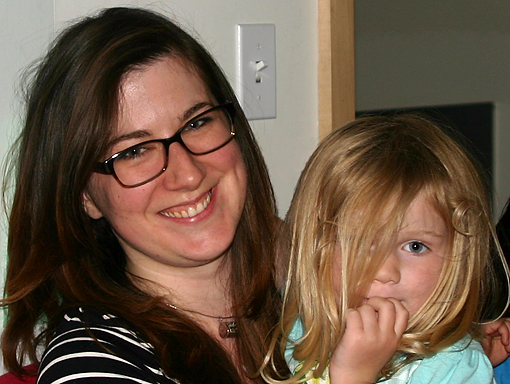
Talking to Toddlers During a Time of Crisis
[et_pb_section fb_built=”1″ _builder_version=”3.22″][et_pb_row _builder_version=”3.25″ background_size=”initial” background_position=”top_left” background_repeat=”repeat”][et_pb_column type=”4_4″ _builder_version=”3.25″ custom_padding=”|||” custom_padding__hover=”|||”][et_pb_text _builder_version=”4.4.2″]
Covid-19 descended upon Seattle, seeping in like a fog first in small ways, then eventually in signals we couldn’t ignore. Stores were empty, hours at our center were limited. A constant state of interruption became the norm. Children were being told constantly to get up and wash their hands, cover coughs, and keep as much distance from one another as we could reasonably expect of toddlers. They had to contend with a harsh spike in our requests for these actions, and were perhaps confused by our sudden intensity. “Why are my teachers being so bossy?” they may have been wondering. When we finally got the announcement of school closures, I spoke with the children in my class of 2- and 3-year-olds about the current situation.
“Do you know why we’re asking you to wash your hands a lot more?” I asked around the lunch table, to the five children that had made it to school that day. “Because of the sickness!” a three-year-old boy said to me, brightly, his eyes wide and expectant. “Yes! What is the sickness?” I responded. “I don’t know” he said back to me, contemplating his sandwich. I said to the children “Grown-ups feel very nervous right now. Some people are getting sick. Some people only get a little bit sick, and some people get very, very sick. We know we have to wash our hands to protect other people from germs, and we have to do that even more now.” The children nodded, seeming to get it. In truth, I think this was all I needed to say.
In the time since becoming an educator, I’ve talked with my colleagues often about the best ways to inform children of current events that could affect their safety. On the whole, we’ve been continuously amazed by their capacity for holding knowledge, for example their familiarity with lockdown procedures, responding quickly and efficiently moving to an inner room of the building when an active shooter was in the neighborhood. We’ve even adapted our phrasing around lockdown drills that involve preparing for an active shooter in the building. We’ve called these drills “quiet drills,” so named because the children have to be “very sneaky and quiet until the grow-ups say it’s ok to talk.” Yes, I choose to leave out the idea that we do this because of the chance that someone would want to come and kill us. Some other educators don’t, actually trusting the children with information like “Some bad guys might want to hurt us. We’re trying to stay safe.”

There’s an element many adults worry about with children: the issue of not only what to tell children, but also when and why to tell them about these things. For some, the why might seem more obvious, and the when a bit more nebulous. Topics such as sexuality, race, physical ability, and yes, of course societal violence and viral pandemic all are things that are difficult to explain to kids. When I’m considering launching a conversation on one of these complex topics, I like to think through the whys and whens with my colleagues, gathering a read on their comfort with these topics, as well as their investment in talking about them with children. Trying to see a topic from one another’s diverse perspective can support us in finding ways to share appropriately with young children.
When a new teacher joins us in the room, we trust that the children will bring up any questions they have about that person’s appearance. More often than not, we can trust the observation skills of young children. Children see so much more than we realize, and it’s often a surprise to find out just how aware they can be. Bear in mind as you consider this that children are noticing the world around them through their specific young lens. Remembering that we only need to answer the questions they bring up, as specifically and succinctly as possible, is the best way to help children stay informed. So, as an example of this, when a child asked me during a lockdown drill “Why do we have to go somewhere else?” I was able to answer truthfully and succinctly “We’re practicing what to do if our classroom doesn’t feel safe. We go to a different safe place all together.”
 Added to the complexity of this hard work is the fact that we as adults sometimes have a lot more experience and understanding of – and sometimes struggles with – these topics than children do. We might find it difficult to talk about death and killing with children because we have a complex history with it ourselves. We recall events from our history that affected us, perhaps we were exposed to violent material early on, or we have traumatic events in our past that affect our ability to share effectively with kids. In the case of Covid 19, perhaps we are more worried for our own safety as adults, making it doubly hard to discuss these events with a child. Both children and adults alike live with the difficulty of uncertainty. We’re all people hoping that someone will tell us how to stay safe. Caregivers – parents, family members, and educators – are a child’s news source. The news that you broadcast includes how you are feeling, what you need, and your willingness to help them find out what they need.
Added to the complexity of this hard work is the fact that we as adults sometimes have a lot more experience and understanding of – and sometimes struggles with – these topics than children do. We might find it difficult to talk about death and killing with children because we have a complex history with it ourselves. We recall events from our history that affected us, perhaps we were exposed to violent material early on, or we have traumatic events in our past that affect our ability to share effectively with kids. In the case of Covid 19, perhaps we are more worried for our own safety as adults, making it doubly hard to discuss these events with a child. Both children and adults alike live with the difficulty of uncertainty. We’re all people hoping that someone will tell us how to stay safe. Caregivers – parents, family members, and educators – are a child’s news source. The news that you broadcast includes how you are feeling, what you need, and your willingness to help them find out what they need.
Grown-ups and children are going to handle these topics in different ways, and there is no one right way that will work for everyone. The conversations you choose about complex or scary topics with children will depend on your child’s developmental maturity as well as your relationship with the child. As ever, timeliness is imperative. Honesty is critical. And responsiveness is the biggest and most helpful tool in our arsenal. Giving children the time, space, and our trust to hold and think about complex topics helps them to have the confidence that their clever minds are capable of this important thinking work. It can be valuable to talk a little, then play a little, allow time to process, and follow up by inviting further thoughts or questions. Remember that processing can look all sorts of ways. You may see a child having more tantrums, making new demands, being clingy, or acting out what they’ve learned through play. Welcome these new feelings, ask questions, set boundaries that highlight your own needs. It is important for children to know that they can come to us in times of stress and that they won’t just be shut down or shushed. Likewise, it’s important for children to know we as adults sometimes need space to process as well.
How have you been speaking to children in your home or your classroom about this new virus, and by extension, this new way of living? What ways has it benefited your relationship? What’s been more difficult? Do you have memories of your own childhood and the ways adults reacted and explained them to you?
I’ve been finding myself thinking of my childhood in Los Angeles, trying to make sense of the riots in the early 90’s. At eight, I was old enough to have some awareness of the events that resulted in city-wide violence. I was also made aware of my parents’ frustration at the imposed curfew, and worked to understand their feelings even as I celebrated internally. I felt, at that time, much like today’s children may feel: that when scary things happen, the best and safest place to be is with grown-ups you love and trust.

Cassie T. is an educator with 2- to 3-year-olds at Hilltop Children’s Center.
Hilltop Educator Institute collaborates regularly with change agents across North America, Europe and New Zealand to provide professional development opportunities in Greater Seattle through evening, half-day and full day workshops known as the Educator Discussion Series (EDS). Hilltop Educator Institute provides resources and support to educators, programs leaders, children’s advocates, and the community at large, in order to widen access and opportunity for all children. To study at Hilltop for a day, register for upcoming workshops, or learn more about our services, email Mike at institute@hilltopcc.org or visit us at www.hilltopcc.com/institute.
[/et_pb_text][/et_pb_column][/et_pb_row][/et_pb_section][et_pb_section fb_built=”1″ admin_label=”section” _builder_version=”3.22″][et_pb_row admin_label=”row” _builder_version=”3.25″ background_size=”initial” background_position=”top_left” background_repeat=”repeat”][et_pb_column type=”4_4″ _builder_version=”3.25″ custom_padding=”|||” custom_padding__hover=”|||”][/et_pb_column][/et_pb_row][et_pb_row _builder_version=”3.25″ background_size=”initial” background_position=”top_left” background_repeat=”repeat”][et_pb_column type=”4_4″ _builder_version=”3.25″ custom_padding=”|||” custom_padding__hover=”|||”][/et_pb_column][/et_pb_row][/et_pb_section][et_pb_section fb_built=”1″ _builder_version=”3.22″][et_pb_row _builder_version=”3.25″ background_size=”initial” background_position=”top_left” background_repeat=”repeat”][/et_pb_row][/et_pb_section][et_pb_section fb_built=”1″ _builder_version=”3.22″][et_pb_row _builder_version=”3.25″ background_size=”initial” background_position=”top_left” background_repeat=”repeat”][/et_pb_row][/et_pb_section]